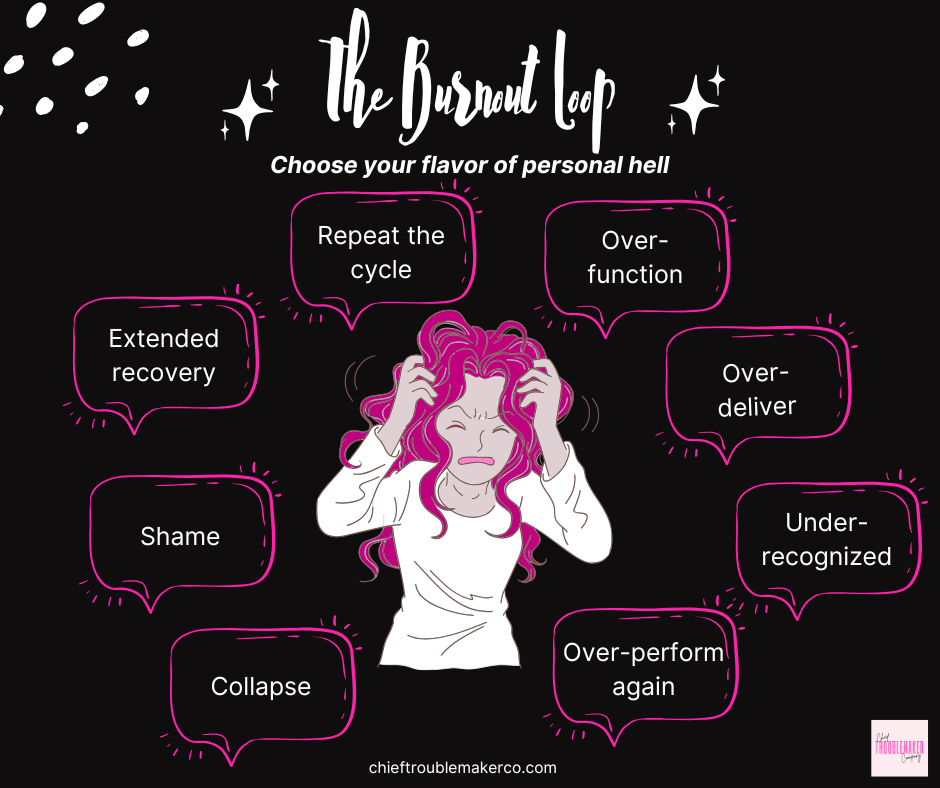Burnout Recovery Is Bullsh*t: How to Actually Get Free
Burnout was never your problem. The system was.
They’ll tell you burnout recovery is about balance. About boundaries. About better time management and smarter delegation and maybe a meditation app if you’re feeling spicy.
They’ll tell you to take a breath, take a break, take a spa day. And then they’ll expect you to come back—calmer, quieter, and grateful to still be invited.
But let’s be clear: burnout recovery isn’t the goal.
You didn’t get here because you lacked boundaries. You got here because you were taught to survive by bending yourself into shapes that no longer fit.
And now? You’re done fitting.
Burnout is not something you recover from. It’s something you rebuild from.
This Is the Part No One Tells You: Burnout Is a Clue. Not a Curse.
Burnout is just the label they slap on us when we stop being useful in the ways they expect. It sounds clinical. Temporary. Fixable. Like you can treat it with hydration and mindfulness apps.
But burnout doesn’t happen to women like us because we’re weak.
It happens because we spent too long fighting biology with performative professionalism.
Burnout is the body saying no before the mouth can form the sentence. It’s not brokenness. It’s data. It’s clarity. It’s evidence.
Evidence that the roles you were playing—the ones that required self-abandonment, silence, and constant smoothing-over—were never sustainable.
The Pattern Is the Problem. Here’s How to See Yours.
Here’s a tool I like to share…it’s not complicated, but it will punch you right in the gut if you’re honest about it:
Map your burnout loop.
Everyone’s loop is a little different, but they all sound something like this:
Over-function
Over-deliver
Under-recognized
Over-perform again to “prove” yourself
Collapse
Shame
Repeat
Or maybe it looks like:
Code-switch
Over-perform
Numb out
Collapse
Hide
Repeat
Or:
Speak up
Get punished for it
Retreat
Get resentful
Burn out
Start again quieter
The loop is your enemy. Not you. Not your ambition. Not your body. The minute you see the loop clearly, you can stop mistaking exhaustion for failure.
You can start seeing it as your roadmap out.
Where to Break the Loop (So You Don’t Break Yourself Again).
Burnout is only dangerous if you treat it like a personal flaw instead of a system failure.
What’s powerful is identifying your exact inflection point.
The moment where you abandon yourself to stay “safe.”
The moment where your nervous system starts sounding the alarm and you ignore it.
For most women I work with, the break point is usually one of these:
The first yes you say when you mean no.
The first apology for something you didn’t do.
The first compliment you brush off because it feels safer to stay small.
The first silence you hold because you don’t want to rock the boat (again).
Find your break point. That’s the door out.
Keep reading with a 7-day free trial
Subscribe to Chief Troublemaker to keep reading this post and get 7 days of free access to the full post archives.


